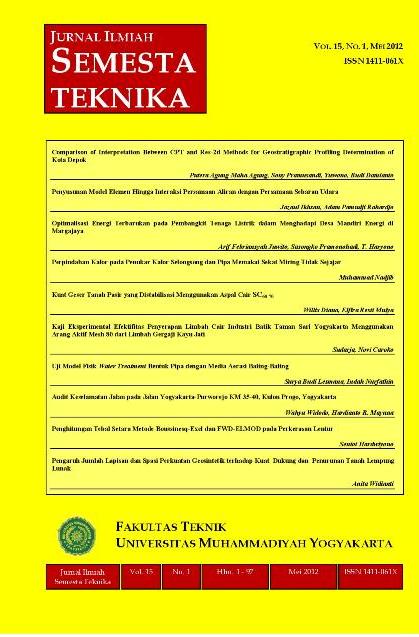Optimalisasi Energi Terbarukan pada Pembangkit Tenaga Listrik dalam Menghadapi Desa Mandiri Energi di Margajaya
DOI:
https://doi.org/10.18196/st.v15i1.440Abstract
The Energy Self-Sufficient Village is one of main programs from goverment about the village ability to produce energy. This program has been launched in 2007 by the President of the Republic of Indonesia, to enhance energy security in rural areas by harnessing local energy potential. The criteria of Energy Self-Sufficient Village is village capability to produce at least 60% of the total amount of required energy, using renewable energy. Geographically, Margajaya village has solar and microhydro resource which is very potential for being developed. Furthermore, Margajaya also produces agricultural commodities such as palm oil, in which it also produces waste like palm bunches which is a very potential biomass. The optimization of renewable energy for electrical power generation which has annual power peak of 65kW and daily energy consumtion of 415kWh/day in Margajaya village has been designed using HOMER. The result from simulation of Hybrid renewable system in HOMER showed that Hydro, Biomass and grid is the most economical solution over hydro-biomass-PV with battery, to design hybrid system with minimum total net present cost (NPC) and cost of electricity. The system can serve annual 100% of load in Margajaya and have surplus of electricity, and could sell to grid with amount of 124.827kWh/years. Economically, the electricity of the system costs US$ 0,013/kWh.
Downloads
Published
How to Cite
Issue
Section
License
Semesta Teknika is licensed under a Creative Commons Attribution 4.0 International License.
Authors who publish with this journal agree to the following terms:
- Authors retain copyright and grant the journal right of first publication with the work simultaneously licensed under a Creative Commons Attribution License that allows others to share the work with an acknowledgement of the work's authorship and initial publication in this journal.
- Authors are able to enter into separate, additional contractual arrangements for the non-exclusive distribution of the journal's published version of the work (e.g., post it to an institutional repository or publish it in a book), with an acknowledgement of its initial publication in this journal.
- Authors are permitted and encouraged to post their work online (e.g., in institutional repositories or on their website) prior to and during the submission process, as it can lead to productive exchanges, as well as earlier and greater citation of published work (See The Effect of Open Access).









